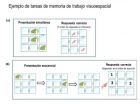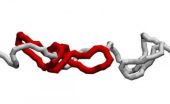(Press-News.org) A hospital is not the best place to get a good night's sleep, especially in a noisy intensive care unit. It's a cause for concern because studies have shown that a lack of sleep can cause patients to experience delirium—an altered mental state that may delay their recovery and lead to short and long-term confusion and memory problems.
A team of doctors, nurses, psychologists and pharmacists in the medical intensive care unit (MICU) at The Johns Hopkins Hospital implemented a project to see if by taking simple steps to reduce nighttime noise, light,and staff interruptions, as well as stopping certain medications for insomnia, they could reduce delirium and improve patient perceptions about the quality of their sleep. Their findings are described in an article posted online by Critical Care Medicine that will be printed in the journal's March issue.
"With our interventions, we were able to improve a patient's odds of being free of delirium in the ICU by 54 percent, even after taking into account the diagnosis, need for mechanical ventilation, age and other factors," says Biren Kamdar, M.D., M.B.A, M.H.S., a Johns Hopkins pulmonary and critical care fellow who led the initiative. "In addition, many patients said that the ICU was quiet and comfortable enough for them to get a good night's sleep," he says.
Three sets of interventions were introduced in stages. The first was a 10-item environmental checklist that included turning off televisions, room and hallway lights, safely consolidating the number of staff visits to patient rooms overnight for drawing blood and giving medications to reduce interruptions, reducing overhead pages and minimizing unnecessary equipment alarms.
In the second stage, patients also were offered eye masks, ear plugs and tranquil music. In the final stage, a new medication guideline was introduced that discouraged giving patients certain commonly prescribed drugs for sleep, such as benzodiazepines, that are known to cause delirium.
Before all of the interventions had been instituted, the researchers did a baseline assessment of 122 patients in the intensive care unit over an eight-week period. After all of the measures were in place, another 178 patients were evaluated.
"Each patient was evaluated twice a day for delirium using the Confusion Assessment Method for the ICU (CAM-ICU), a widely used delirium screening tool. After 13 weeks, during which all of the interventions had been in place, we saw a substantial reduction in patient delirium compared to the baseline group," Kamdar says.
The researchers also measured patient perception of their sleep quality with a questionnaire given to each patient by MICU nurses every morning. While there were positive findings in that measure, the improvement overall was not statistically significant.
"This is a unique study in terms of the number of patients involved and the three stages of interventions," says Dale M.Needham, M.D., Ph.D., associate professor of pulmonary and critical care medicine at Johns Hopkins who is the senior author of the study article.
"Delirium is a syndrome of confused thinking and lack of attention. It typically comes on quickly with illness, and it's a marker for the health of the brain," says Needham. "We put together a common-sense approach to change how care is provided to see if by improving sleep, we could reduce patients' confused thinking, and it was effective."
Needham also says that physical rehabilitation is important for the recovery of intensive care patients, and if they're sleepy or delirious during the day, they can't appropriately participate in their therapy.
"Up to 80 percent of ICU patients may experience delirium during their stay. The longer they have it, the higher their risk of long-lasting problems with memory and other cognitive functions. With advances in medicine and technology, many ICU patients can now recover and go home, so reducing their risk of delirium in the hospital is very important," Needham says.
###
The project was supported by a Ruth L. Kirschstein National Research Service Award from the National Institutes of Health for Dr. Kamdar's work on the initiative (F32 HL 104901).
The intervention was conducted before The Johns Hopkins Hospital opened a new building with 560 spacious, all-private patient rooms, including a new MICU and other intensive care units. Clinical areas throughout the new building have sound-absorbing features to reduce noise, and there is a new nurse call system that replaces overhead paging. END
Simple measures to promote sleep can reduce delirium in intensive care patients
Delirium can lead to short- and long-term confusion and memory problems
2013-02-20
ELSE PRESS RELEASES FROM THIS DATE:
Tool boosts success of online collaborations by redistributing the burdens of leadership
2013-02-20
PITTSBURGH—The Web makes it possible for lots of people to collaborate on projects, but it doesn't make it easy to lead them. A Carnegie Mellon University researcher has developed a new tool that helps leaders see complex, collaborative projects through to completion by redistributing leadership responsibilities.
The tool, called Pipeline, makes it easier to assign, critique and track the progress of individual tasks within a project and makes it easy for leaders to delegate responsibility to others. As evidenced by a case study in which Pipeline was used to manage the ...
First signals from brain nerve cells with ultrathin nanowires
2013-02-20
Electrodes operated into the brain are today used in research and to treat diseases such as Parkinson's. However, their use has been limited by their size. At Lund University in Sweden, researchers have, for the first time, succeeded in implanting an ultrathin nanowire-based electrode and capturing signals from the nerve cells in the brain of a laboratory animal.
The researchers work at Lund University's Neuronano Research Centre in an interdisciplinary collaboration between experts in subjects including neurophysiology, biomaterials, electrical measurements and nanotechnology. ...
Researchers decipher modus operandi of potential Alzheimer's drug
2013-02-20
This press release is available in German.
The study published in "Angewandte Chemie" might help to work out strategies for developing potential drugs. As the team of scientist including Markus Zweckstetter and Eckhard Mandelkow report, methylene blue inactivates molecular residues that promote the bonding of tau proteins.
Methylene blue is a multi-talented substance with a long history. The synthetic compound was first produced in 1876, and since then has served not only as a blue dye, but also as a medical drug – for example to treat malaria and prevent urinary ...
Bilingual children have a better 'working memory' than monolingual children
2013-02-20
A study conducted at the University of Granada and the University of York in Toronto, Canada, has revealed that bilingual children develop a better working memory –which holds, processes and updates information over short periods of time– than monolingual children. The working memory plays a major role in the execution of a wide range of activities, such as mental calculation (since we have to remember numbers and operate with them) or reading comprehension (given that it requires associating the successive concepts in a text).
The objective of this study –which was published ...
Healthy rivalry could boost sport and business performance
2013-02-20
New research shows that people can recover from poor performance when rivals comment on their failures. The research, to be published in the Journal of Experimental Social Psychology, shows that while criticism from team members sends individuals into downward performance spirals, external criticism can be a trigger that boosts performance as people try to prove the outsiders wrong. The research carried out by the University of Exeter, Amherst College and the University of Stirling offers a method of improving performance following setbacks and can be applied both in the ...
New taxonomy of platinum nanoclusters
2013-02-20
Physicists have gained new insights into the inner intricacies of the structural variations of metallic nanoclusters. This work by Luca Pavan, Cono Di Paola and Francesca Baletto from King's College London, UK, is about to be published in EPJ D. It takes us one step closer to tailoring on-demand characteristics of metallic nanoparticles. Indeed, the geometric structure of these nanoclusters influences their chemical and physical properties, which differ from those of individual molecules and of bulk metals.
The problem resides in the difficulty in evaluating the optimal ...
Molecular basis identified for tissue specific immune regulation in the eye and kidney
2013-02-20
Both AMD, which affects around 50 million people worldwide, and aHUS, a rare kidney disease that affects children, are associated with incorrectly controlled immune systems. A protein called complement factor H (CFH) is responsible for regulating part of our immune system called the complement cascade. Genetic alterations in CFH have been shown to increase a person's risk of developing either AMD or aHUS, but rarely both. Why this is the case has never been explained until now.
Researchers from the Wellcome Trust Centre for Cell Matrix Research and the Ophthalmology and ...
The nano-channel that disentangles knots
2013-02-20
The DNA, just like hair, has a tendency to become knotted, thus it may be useful to disentangle it.
Unfortunately, it is not possible to "actively" choose at random (or better, in one solution) the filaments with the desired features, and this is why scientists adopt "passive" solutions like, for instance, having the DNA pass through nano-pores or nano-channels.
"Channels and filaments have physical features we may exploit to selectively let a type of molecule pass through" explains Micheletti. "You can have more or less entangled filaments and featuring knots of different ...
New technology in the magnetic cooling of chips
2013-02-20
Luis Hueso, the CICnanoGUNE researcher, together with researchers from the University of Cambridge, among others, has developed a new technology in the magnetic cooling of chips based on the straining of materials. Compared with the current technologies, this advance enables the impact on the environment to be lessened. The work has been published recently in the prestigious journal Nature Materials.
Current cooling systems, be they refrigerators, freezers or air conditioning units, make use of the compression and expansion of a gas. When the gas is compressed, it changes ...
A self-healing protective coating for concrete
2013-02-20
Scientists are reporting development of what they describe as the first self-healing protective coating for cracks in concrete, the world's most widely used building material. Their study on the material — which is inexpensive and environmentally friendly — appears in the journal ACS Applied Materials & Interfaces.
Chan-Moon Chung and colleagues explain that protecting concrete roads, bridges and other structures from developing tiny cracks has been a major technological challenge. Cracks allow water, salt used for deicing and air to enter the concrete. During winter ...
LAST 30 PRESS RELEASES:
Sleeping in on weekends may help boost teens’ mental health
Study: Teens use cellphones for an hour a day at school
After more than two years of war, Palestinian children are hungry, denied education and “like the living dead”
The untold story of life with Prader-Willi syndrome - according to the siblings who live it
How the parasite that ‘gave up sex’ found more hosts – and why its victory won’t last
When is it time to jump? The boiling frog problem of AI use in physics education
Twitter data reveals partisan divide in understanding why pollen season's getting worse
AI is quick but risky for updating old software
Revolutionizing biosecurity: new multi-omics framework to transform invasive species management
From ancient herb to modern medicine: new review unveils the multi-targeted healing potential of Borago officinalis
Building a global scientific community: Biological Diversity Journal announces dual recruitment of Editorial Board and Youth Editorial Board members
Microbes that break down antibiotics help protect ecosystems under drug pollution
Smart biochar that remembers pollutants offers a new way to clean water and recycle biomass
Rice genes matter more than domestication in shaping plant microbiomes
Ticking time bomb: Some farmers report as many as 70 tick encounters over a 6-month period
Turning garden and crop waste into plastics
Scientists discover ‘platypus galaxies’ in the early universe
Seeing thyroid cancer in a new light: when AI meets label-free imaging in the operating room
Neutrophil-to-lymphocyte ratio may aid risk stratification in depressive disorder
2026 Seismological Society of America Annual Meeting
AI-powered ECG analysis offers promising path for early detection of chronic obstructive pulmonary disease, says Mount Sinai researchers
GIMM uncovers flaws in lab-grown heart cells and paves the way for improved treatments
Cracking the evolutionary code of sleep
Medications could help the aging brain cope with surgery, memory impairment
Back pain linked to worse sleep years later in men over 65, according to study
CDC urges ‘shared decision-making’ on some childhood vaccines; many unclear about what that means
New research finds that an ‘equal treatment’ approach to economic opportunity advertising can backfire
Researchers create shape-shifting, self-navigating microparticles
Science army mobilizes to map US soil microbiome
Researchers develop new tools to turn grain crops into biosensors
[Press-News.org] Simple measures to promote sleep can reduce delirium in intensive care patientsDelirium can lead to short- and long-term confusion and memory problems


